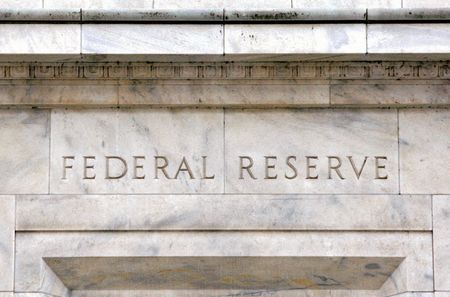A look at the day ahead in U.S. and global markets by Samuel Indyk
Even with a looming policy decision from the European Central Bank on Thursday, Wednesday’s U.S. inflation data are likely to be the most important macro input for markets this week ahead of the Fed’s September rate announcement.
The data are expected to show that consumer prices increased by 0.6% in August, the most in 14 months, driven by a surge in the cost of gasoline, but the focus could well fall on the core measure, which strips out volatile food and energy prices.
Core prices are forecast to have risen by a more acceptable 0.2% for a third straight month. That would take the annual rate down to 4.3%, the smallest year-on-year rise since September 2021.
Such a move would be a welcome sign for Fed Chair Jerome Powell before next week’s policy meeting, although not enough to declare victory, especially with oil prices at their highest in 10 months.
What makes these figures so interesting is the central bank is already in its quiet period before the Sept. 20 rate announcement, with traders overwhelmingly expecting the Fed to keep rates on hold. Barring a big upside surprise, that should remain the case after the data.
Pricing for the ECB’s meeting next week has been more volatile.
Markets now price a roughly 70% chance they raise rates, up from around 20% in early September, after Reuters reported that the central bank is to project inflation staying above 3% next year, bolstering the case for a tenth straight hike.
That updated projection is well above the central bank’s 2% inflation target and above the 2.7% predicted by a Reuters poll of economists.
The Reuters report “is seen as boosting the case for another ECB rate hike tomorrow,” said Rhys Herbert, senior economist at Lloyds Bank, “although the decision is still seen as a close call.”
This has left euro hovering above its recent three-month low against the dollar at around $1.0740.
The dollar index is close to its highest since March, while the pound dropped after data showed growth contracted in July by the most since Dec. 2022 as strikes and bad weather weighed on output.
European equities are struggling as most major bourses trade in the red, while Wall Street futures are in wait-and-see mode before the data.
On the corporate front, Apple shares are flat in pre-market, having dropped 1.7% on Tuesday after the iPhone maker unveiled its latest flagship handset, but said it would not raise prices for the new models.
Key developments that should provide more direction to U.S. markets later on Wednesday:
* U.S. CPI, MBA Mortgage Applications
* EIA oil inventory data
* U.S. Treasury auctions 30-year bonds
(Reporting by Samuel Indyk; Editing by Christina Fincher)

